Maxwell Anderson at the Frist March 22: Modern Challenges in Ancient Art
 Maxwell Anderson, consulting scholar, Mediterranean Section, University of Pennsylvania Museum of Archaeology and Anthropology, will address “Modern Challenges in Ancient Art” in a lecture held on Thursday, March 22, at 6:30 pm in the Frist Center Auditorium, 919 Broadway.
Maxwell Anderson, consulting scholar, Mediterranean Section, University of Pennsylvania Museum of Archaeology and Anthropology, will address “Modern Challenges in Ancient Art” in a lecture held on Thursday, March 22, at 6:30 pm in the Frist Center Auditorium, 919 Broadway.
The exhibition Rome: City and Empire at the Frist Center for the Visual Arts, on view through May 28, offers visitors insight into the objects used in worship, commemoration, and decoration in the Roman Empire. Anderson, author of Antiquities: What Everyone Needs to Know (Oxford University Press, 2016), will summarize multiple perspectives about the issues facing us today in protecting ancient heritage, including the care and supervision of excavations and museum collections, the international treaties and laws governing the circulation of objects from antiquity, and the state of the art trade and public and private collecting.
His background in the field of antiquities includes seven years as a curator in the Department of Greek and Roman Art at the Metropolitan Museum of Art (1981–87), teaching positions in the field of Roman art history at the University of Rome II, Princeton University, and Emory University, and nearly thirty years as an art museum director (1987–2015), in addition to assisting mayors and city governments in improving their cities through the provision of vibrant cultural offerings.
He currently serves as president of the Souls Grown Deep Foundation, a non-profit organization dedicated to documenting, preserving, and promoting the artwork of artists from the African American South, and the cultural traditions in which it is rooted. The foundation derives its name from a 1921 poem by Langston Hughes (1902-1967) titled The Negro Speaks of Rivers, the last line of which is “My soul has grown deep like the rivers.”
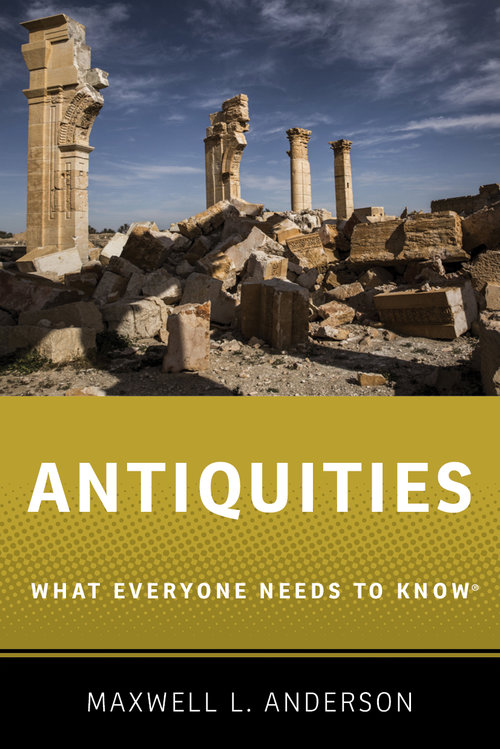 His publications include the monograph Pompeian Frescoes in the Metropolitan Museum of Art (1987) and dozens of articles, along with two books: The Quality Instinct: Seeing Art Through a Museum Director’s Eye (Rowman & Littlefield, 2012) and Antiquities: What Everyone Needs to Know. He was decorated as a Commendatore dell’Ordine al Merito della Repubblica Italiana (Knight Commander in the Order of Merit of the Italian Republic) in 1990, and named a Chevalier dans l’Ordre des Arts et des Lettres (Knight in the Order of Arts and Letters of the French Republic) in 2010. Anderson earned his bachelor’s degree in art history at Dartmouth College in 1977, and his doctorate at Harvard University in 1981.
His publications include the monograph Pompeian Frescoes in the Metropolitan Museum of Art (1987) and dozens of articles, along with two books: The Quality Instinct: Seeing Art Through a Museum Director’s Eye (Rowman & Littlefield, 2012) and Antiquities: What Everyone Needs to Know. He was decorated as a Commendatore dell’Ordine al Merito della Repubblica Italiana (Knight Commander in the Order of Merit of the Italian Republic) in 1990, and named a Chevalier dans l’Ordre des Arts et des Lettres (Knight in the Order of Arts and Letters of the French Republic) in 2010. Anderson earned his bachelor’s degree in art history at Dartmouth College in 1977, and his doctorate at Harvard University in 1981.
Free and open to the public, the lecture is supported in part by Vanderbilt’s Department of the History of Art and the Program in Classical and Mediterranean Studies.
Posted by vrcvanderbilt on March 15, 2018 in Events, HART, HART in Nashville, Lectures, News, VRC
March 20 AIA Lecture at the Parthenon to Address Effects of Ancient and Modern Warfare on Civilizations
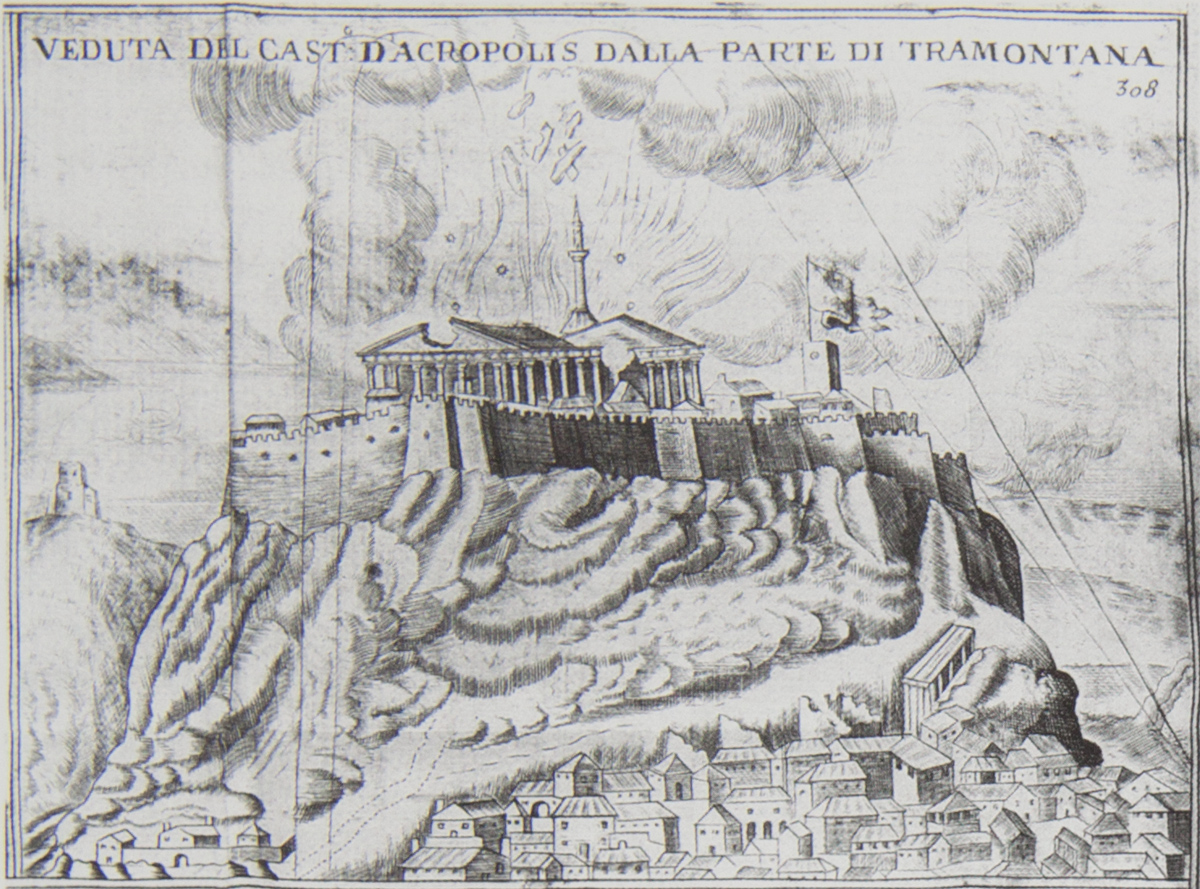 In an AIA lecture at 6 pm on Tuesday, March 20, at the Nashville Parthenon, Brian Rose, James B. Pritchard Professor of Mediterranean Archaeology, University of Pennsylvania, and Katherine Schwab, professor of visual and performing arts, Fairfield University, will jointly address the theme of “Ancient Wars and Modern Conflicts.” They will discuss the effects of ancient and modern warfare on the civilizations where wars are waged and on the people who fight them, as well as those who are left behind and those who are caught up in them.
In an AIA lecture at 6 pm on Tuesday, March 20, at the Nashville Parthenon, Brian Rose, James B. Pritchard Professor of Mediterranean Archaeology, University of Pennsylvania, and Katherine Schwab, professor of visual and performing arts, Fairfield University, will jointly address the theme of “Ancient Wars and Modern Conflicts.” They will discuss the effects of ancient and modern warfare on the civilizations where wars are waged and on the people who fight them, as well as those who are left behind and those who are caught up in them.
Rose will present both the physical damage and cultural devastation of war on the societies in which they take place. He will offer insight into how to respect the cultural property of other societies and how the military can assist local citizens in their efforts to preserve and protect their cultural artifacts from the effects of war. For more than a decade, Rose has offered pre-deployment education and training for armed forces personnel bound for Iraq, Afghanistan and Djibouti to emphasize cultural heritage awareness and protection. Soldiers learn about the regions’ historical backgrounds, heritage and resources, site recognition, emergency salvage, and conservation.
Schwab will discuss the context for her Parthenon drawings, why she made them and her current research on these severely damaged relief sculptures. These Parthenon metope sculptures from three sides of the temple had sustained intentional damage by the 6th century CE, when anti-pagan zealots took hammers and other tools to destroy many of the figures.
The joint presentation is held in conjunction with the Parthenon’s latest exhibition, An Archaeologist’s Eye: The Parthenon Drawings of Katherine A. Schwab, on view at the Nashville Parthenon through May 6. This 35-work exhibition features pastel and graphite drawings by Schwab on the metopes of the ancient Parthenon.
Free and open to the public, this lecture is cosponsored by Humanities Tennessee, Vanderbilt’s Program in Classical and Mediterranean Studies, the Nashville Society of the Archaeological Institute of America, and The Conservancy for the Parthenon and Centennial Park. Those who plan to attend the AIA lecture are encouraged to call the Nashville Parthenon at 615.862.8431 to reserve a seat. A reception follows the lecture. The Parthenon is located at 2500 West End Avenue in the Centennial Park.
Posted by vrcvanderbilt on March 15, 2018 in Events, HART, Lectures, News, VRC
Heeryoon Shin to Address Women as Art Patrons in Early Modern India at March 14 Edit-a-Thon
 As part of Vanderbilt Libraries’ Annual ART+FEMINISM Wikipedia Edit-a-Thon, Heeryoon Shin, assistant professor of history of art, will address “Women as Patrons in Early Modern Asia” at 11:10 am on Wednesday, March 14, in the Central Library, room 418A.
As part of Vanderbilt Libraries’ Annual ART+FEMINISM Wikipedia Edit-a-Thon, Heeryoon Shin, assistant professor of history of art, will address “Women as Patrons in Early Modern Asia” at 11:10 am on Wednesday, March 14, in the Central Library, room 418A.
From 11 am-1 pm there will be a communal updating of Wikipedia entries on subjects related to art and feminism. No experience is required. “We tutor beginner Wikipedians and provide tips on updating artists and entries,” said Mary Ann Caton, coordinator of the library event. “New tools this year include crowd-sourced editing suggestions and Art+Feminism Stub Finder. Bring your laptop and power cord. Drop-ins are welcome, and lunch is provided.”
Posted by vrcvanderbilt on March 12, 2018 in Events, HART, News, Student/Alumni, Technology, VRC
Vivien Fryd Is Keynote Speaker at University of Arkansas Art History Symposium
 Vivien Fryd, professor of history of art, is the keynote speaker at the University of Arkansas Art History Symposium March 8-9 in Fayetteville, Arkansas. Fryd, niece of the New York Times photographer Henry Ries (1917-2004) will address the topic Henry Ries: The Berlin Wall as a Counter-Monument Atop the Ruins of War, Terror, and Division.
Vivien Fryd, professor of history of art, is the keynote speaker at the University of Arkansas Art History Symposium March 8-9 in Fayetteville, Arkansas. Fryd, niece of the New York Times photographer Henry Ries (1917-2004) will address the topic Henry Ries: The Berlin Wall as a Counter-Monument Atop the Ruins of War, Terror, and Division.
Ries, a Berlin-born Jew who fled Hitler with his sister (Fryd’s mother) in 1938, returned to Germany after the war and often used images of mundane life to contrast the darkness of war’s aftermath. Among his most evocative photographs of postwar Germany are his images of the Berlin airlift in 1948 and 1949.
Fryd is currently writing a book manuscript entitled Writing Trauma: Henry Ries’ Photographs of Berlin, 1937-2004.
*Henry Ries. Wanda Looks at ‘The Life of Berliners’, ca. 1978.
Posted by vrcvanderbilt on March 9, 2018 in Conferences, Events, HART, News, VRC
Elizabeth Moodey Named Paul Mellon Visiting Senior Fellow at National Gallery of Art
 The Center for Advanced Study in the Visual Arts (CASVA) at the National Gallery of Art has named Elizabeth Moodey, associate professor of the history of art, a Paul Mellon Visiting Senior Fellow for the months of March and April 2018. During that time Moodey will be in residence working on a book on grisaille primarily in the northern territories of the dukes of Burgundy, entitled Conspicuous Abstention: Grisaille in the Art of the Burgundian Netherlands.
The Center for Advanced Study in the Visual Arts (CASVA) at the National Gallery of Art has named Elizabeth Moodey, associate professor of the history of art, a Paul Mellon Visiting Senior Fellow for the months of March and April 2018. During that time Moodey will be in residence working on a book on grisaille primarily in the northern territories of the dukes of Burgundy, entitled Conspicuous Abstention: Grisaille in the Art of the Burgundian Netherlands.
Moodey has frequently written and lectured on grisaille—painting in shades of gray—with her most recent essay, “Grisaille, 1450-1550,” appearing in COLOUR: the Art and Science of Illuminated Manuscripts (exhibition catalogue), July-December 2016, Fitzwilliam Museum, Cambridge. In March of last year she delivered a lecture on color in dress, called “’Ledit duc, ledit jour’: Color Choices at the Burgundian Court,” for the Sackler Research Forum Renaissance series at The Courtauld Institute of Art, London.
One of thirteen Visiting Senior Fellows (2017-2018), Moodey will have access to the notable resources represented by the art collections, the library, and the image collections of the National Gallery of Art, as well as to the Library of Congress and other specialized research libraries and collections in the Washington area. Lectures, colloquia, shop talks, and other scholarly gatherings complement the fellowship program.
*Rogier van der Weyden. Beaune Altarpiece, detail from exterior (wings of altarpiece closed): Saint Anthony (painted in grisaille) and the wife of the patron Nicolas Rolin, Chancellor, oil on oak panels,1443-1451, Musée de l’Hôtel Dieu, Beaune.
Posted by vrcvanderbilt on February 22, 2018 in HART, News, VRC
Cultures in Clay Lecture and Cuneiform Workshop Held February 21-22 at the Divinity School
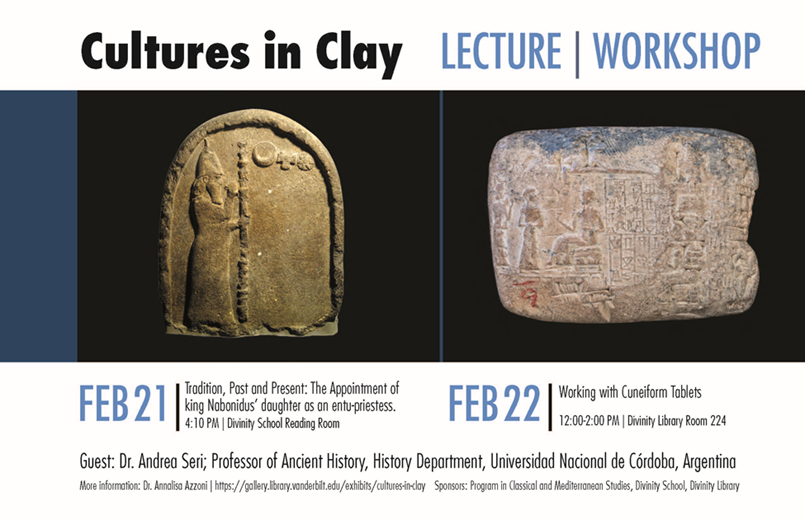
Andrea Seri, professor of ancient history, Universidad Nacional de Córdoba, will present a lecture entitled Tradition, Past and Present:The Appointment of King Nabonidus’ Daughter as an Entu-priestess on Wednesday, February 21, at 4:10 pm in the Divinity School Reading Room. On Thursday, February 22, Seri will lead a workshop on working with cuneiform tablets that will be held in the Divinity Library, Room 224.
The lecture focuses on one of the inscriptions of the last independent ruler of Babylonia, King Nabonidus (556-539 BC). The cuneiform manuscript, written on a clay cylinder, commemorates the appointment of Nabonidus’ daughter as an entu-priestess of the moon god in the ancient city of Ur. The inscription opens with an eclipse announcing the divine desire of a priestess and then explains the way in which the king, to comply with the divine request, reconstructed a ceremony that had not been practiced for centuries. By crisscrossing the information from textual analysis, archaeological, philological, and historical data, Seri shows how the writer resorted to the use of genuine ancient inscriptions and excavated antiques to intertwine present, past and tradition in order to compose his account of the religious ceremony.
Seri is visiting Vanderbilt in conjunction with the Cultures in Clay exhibit at the Divinity Library. The exhibit draws from two Vanderbilt collections: the Cuneiform Tablets Collection, donated by the family of James Stevenson in 1989, and the Arno Poebel Collection, acquired by the Divinity Library in 1968. Stevenson was a biblical scholar and Assyriologist who was a longtime faculty member at Vanderbilt. His tablets date from around 2000 BCE. Seri contributed her expertise toward identifying and translating the Stevenson tablets and has returned to conduct a workshop on reading the tablets and other parts of the research process for interested graduate students.
Both events are sponsored by the Program in Classical and Mediterranean Studies, Divinity School, and Divinity Library. For more nformation about either event, please contact Annalisa Azzoni, senior lecturer in Hebrew Bible, at 615.343.3972 or email annalisa.azzoni@vanderbilt.edu.
Posted by vrcvanderbilt on February 21, 2018 in Divinity School, Events, HART, Lectures, News, VRC
HART’s Miranda Pepin Stars in VUT Play “Orlando” at Neely Theatre
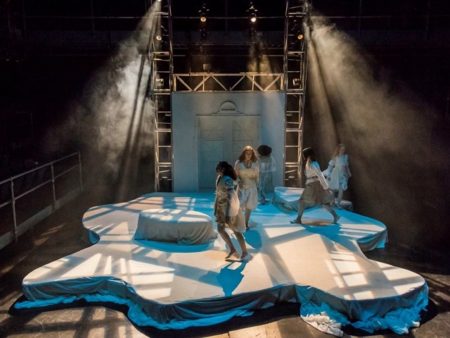 Miranda Pepin, HART student worker and an A&S senior, plays Orlando in the VU Theatre production of Orlando, an adaptation of a 1928 novel by Virginia Woolf, that runs for two weekends beginning Friday, February 16. The production, directed by Jessika Malone, a Fred Coe Artist-in-Residence, will take place in Neely Auditorium at 8 pm on February 16, 17, 23 and 24. Performances also are scheduled at 2 pm February 18 and 7 pm February 21.
Miranda Pepin, HART student worker and an A&S senior, plays Orlando in the VU Theatre production of Orlando, an adaptation of a 1928 novel by Virginia Woolf, that runs for two weekends beginning Friday, February 16. The production, directed by Jessika Malone, a Fred Coe Artist-in-Residence, will take place in Neely Auditorium at 8 pm on February 16, 17, 23 and 24. Performances also are scheduled at 2 pm February 18 and 7 pm February 21.
The Vanderbilt production is playwright Sarah Ruhl’s adaptation of Woolf’s story, with the main character living through centuries first as a man and later as a woman. “As an exploration of gender, love and sexuality, Orlando takes us on a journey of self-discovery and self-reflection applicable even today,” said Malone.
“Beginning in Elizabethan London, Orlando first learns love under the regal gaze of Queen Elizabeth, but is soon wooed by the graceful yet masculine Princess Sasha of Russia,” said Julie Jones, the production’s dramaturg and a senior who is majoring in international development and social change.
“After many heartbreaks and false romances, Orlando escapes to Constantinople, where he awakes as a woman in the 18th century. Orlando returns to London, again struggling with deceitful archdukes before falling in love with a sailor, entering the 20th century, and finally finishing her epic poem.”
Pepin, a physics major with minors in theatre and scientific computing, has worked in HART’s Visual Resources Center since 2017. She performed in the Nashville Shakespeare Festival’s signature program, Shakespeare in the Park, last summer.
*Miranda Pepin (Orlando) and Grace Allaman (Chorus) in VU Theatre production of Orlando (photograph by Phillip Franck/Vanderbilt University; article by Ann Marie Deer Owens, Vanderbilt News)
Posted by vrcvanderbilt on February 15, 2018 in Events, HART, News, Student/Alumni, VRC
February 20 AIA Lecture Features Mireille Lee and Katherine Schwab on the Erechtheion Caryatids
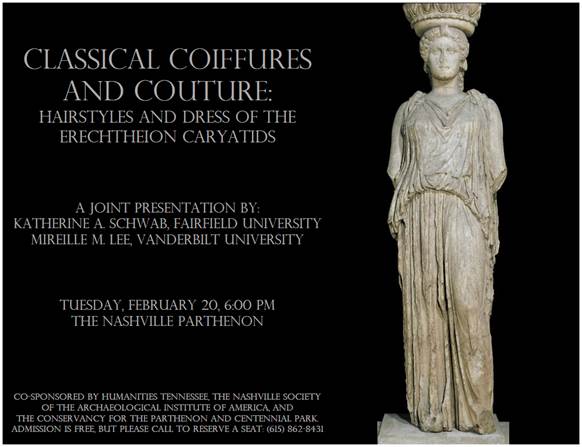 Although the Parthenon is the most famous building of the ancient Acropolis, the Erechtheion was the most sacred, housing multiple cult places and shrines. The famous Caryatid porch, which employed six statues of ideal maidens as architectural supports, is the most distinctive–and enigmatic–part of the building.
Although the Parthenon is the most famous building of the ancient Acropolis, the Erechtheion was the most sacred, housing multiple cult places and shrines. The famous Caryatid porch, which employed six statues of ideal maidens as architectural supports, is the most distinctive–and enigmatic–part of the building.
In an AIA lecture on Tuesday, February 20, at the Nashville Parthenon, Katherine Schwab, professor of visual and performing arts, Fairfield University, and Vanderbilt’s Mireille Lee, assistant professor of history of art, will analyze the hairstyles and dress of the caryatids themselves to help elucidate the ideological functions of the statues and the building as a whole. The presentation, “Classical Coiffures and Couture: Hairstyles and Dress of the Erechtheion Caryatids,” begins at 6 pm with a screening of a documentary produced by Schwab, in which she recreated the hairstyles of the caryatids using Fairfield student models. Following Schwab’s presentation, Lee will speak about the dress of the caryatids and their significance to the building as a whole.
Free and open to the public, this lecture is cosponsored by Humanities Tennessee, the Nashville Society of the Archaeological Institute of America, and The Conservancy for the Parthenon and Centennial Park. Those who plan to attend the AIA lecture are encouraged to call the Nashville Parthenon at 615.862.8431 to reserve a seat.
Posted by vrcvanderbilt on February 14, 2018 in Events, HART, Lectures, News, VRC
Lisa Reilly to Lead February 16 Roundtable Discussion at Digital Humanities Center
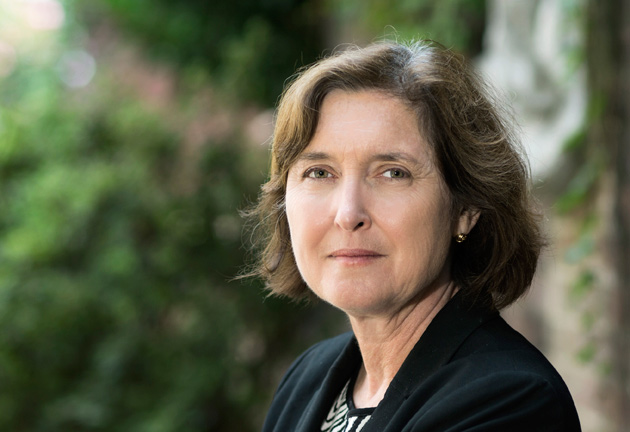 Faculty and graduate students are invited to participate in a roundtable discussion on “Architecture and Environment Research in the Digital Age” with Lisa Reilly, School of Architecture, University of Virginia. The event will be held on Friday, February 16, from 2:00 to 3:30 pm at the Center for Digital Humanities in Buttrick Hall 344.
Faculty and graduate students are invited to participate in a roundtable discussion on “Architecture and Environment Research in the Digital Age” with Lisa Reilly, School of Architecture, University of Virginia. The event will be held on Friday, February 16, from 2:00 to 3:30 pm at the Center for Digital Humanities in Buttrick Hall 344.
Reilly, a medieval architectural historian and leading proponent of digital humanities technology in teaching and research, is currently completing a book on Norman visual culture throughout the Romanesque world. Her ongoing research project investigates the medieval design process using digital analysis.
Reilly is at Vanderbilt this week to deliver the Norman L. and Roselea J. Goldberg Lecture in Art History at 4:10 pm on February 15 in 203 Cohen Memorial Hall. She will address “Multilingual Mediterranean: The Cappella Palatina in Palermo and the Court of Roger II,” followed by a reception in the atrium.
“The Department of History of Art is pleased to benefit from Professor Reilly’s pioneering scholarship on Norman material culture and its relationship to Mediterranean identity, as well as her groundbreaking use of digital methods in architectural history—a central concern of our department,” said Kevin Murphy, professor and chair, department of history of art.
Posted by vrcvanderbilt on February 14, 2018 in Digital Humanities, Events, HART, News, Technology, VRC
Cohen Hall Hosts Exhibit on “Syriac: Preserving an Endangered World Culture”
 For nearly two thousand years, Christians across the Middle East and Asia have shared a common heritage through the Syriac language (a dialect of Aramaic) and culture. Syriac texts are one of the largest surviving bodies of literature from the period, including more than 20,000 manuscripts and fragments related to theology, philosophy, commerce, science, and medicine. Many of the Syriac-speaking communities of the Middle East have faced numerous threats to their survival. Indeed, these little known cultures are on the brink of extinction.
For nearly two thousand years, Christians across the Middle East and Asia have shared a common heritage through the Syriac language (a dialect of Aramaic) and culture. Syriac texts are one of the largest surviving bodies of literature from the period, including more than 20,000 manuscripts and fragments related to theology, philosophy, commerce, science, and medicine. Many of the Syriac-speaking communities of the Middle East have faced numerous threats to their survival. Indeed, these little known cultures are on the brink of extinction.
In response, the exhibit “Syriac: Preserving an Endangered World Culture,” currently on view in Cohen Memorial Hall, showcases the enduring presence of Syriac culture around the globe.The exhibit features reproductions of manuscripts, historical photographs, as well as a local connection to the history of Tennessee with items from the family collection of Rev. Dr. P.K. Geevarghese, who served as priest of the first Indian Orthodox parish in Tennessee. Geevarghese’s son, Dr. Sunil K. Geevarghese, is a member of the Vanderbilt School of Medicine faculty and contributed to this aspect of the exhibit.
“There was a period of time—about 300 to 1300 A.D.—when Syriac culture, especially its literature, flourished,” said David Michelson, assistant professor of the history of Christianity at Vanderbilt Divinity School. “Syriac-speaking communities could be found in what today would be Turkey, Lebanon, Israel, Palestine, Syria, Iraq, Iran, India, Central Asia, China and Mongolia. In fact, the medieval version of the Mongolian alphabet was actually derived from the Syriac alphabet.”
Michelson, also an affiliate assistant professor of classical and Mediterranean studies, continued: “Today the most robust communities of the Syriac religious heritage can be found among the ‘St. Thomas Christians’ of Kerala, India. The Syriac churches of India continue to be one of the major providers of new clergy for the Roman Catholic Church worldwide. Moreover, as these St. Thomas Christians have emigrated to the United States, they have founded parishes that continue their unique Syriac liturgy and traditions. The first such parish in Tennessee was St. Paul’s Indian Orthodox Syrian Church in Chattanooga, founded 50 years ago by the Rev. Dr. P.K. Geevarghese. We are delighted to highlight this aspect of Tennessee history.”
The exhibit is curated by Michelson, Charlotte Lew, exhibit coordinator of the Divinity Library, Stephanie Fulbright (MTS’17), and Julia Liden (MTS’18), with assistance from the Vanderbilt Fine Arts Gallery. Free and open to the public through March 2, the exhibit is on view in the second floor lobby of Cohen Hall and will remain permanently on display online.
Sponsored by Vanderbilt Divinity School, Jean and Alexander Heard Library, Vanderbilt Fine Arts Gallery, and the Program in Classics and Mediterranean Studies, this exhibition is part of ongoing research at Vanderbilt exploring the rich and far-reaching role of Syriac culture in world history. Vanderbilt is host to Syriaca.org, a first-of-its-kind online reference hub for the study of Syriac history, literature, and culture. “We invite you to browse the exhibit and to explore Syriaca.org,” said Michelson. “By learning about Syriac culture and history, you are helping to preserve it.”
Exhibit hours are from Monday through Friday, 8 am to 6:30 pm, and weekends, 1 to 6 pm. For more information and online images of the exhibit, visit the exhibit website.
*St. Thomas Cross, traditional East Syriac design. Kerala, India. 2006. Photograph by Henry Shipman. The St. Thomas Cross is a symbol of the shared heritage among the many Syriac denominations in India. (Ann Marie Deer Owens contributed to this article, Research News @Vanderbilt)
Posted by vrcvanderbilt on February 9, 2018 in Divinity School, Events, Fine Arts Gallery, HART, News, Student/Alumni, VRC

©2025 Vanderbilt University ·
Site Development: University Web Communications